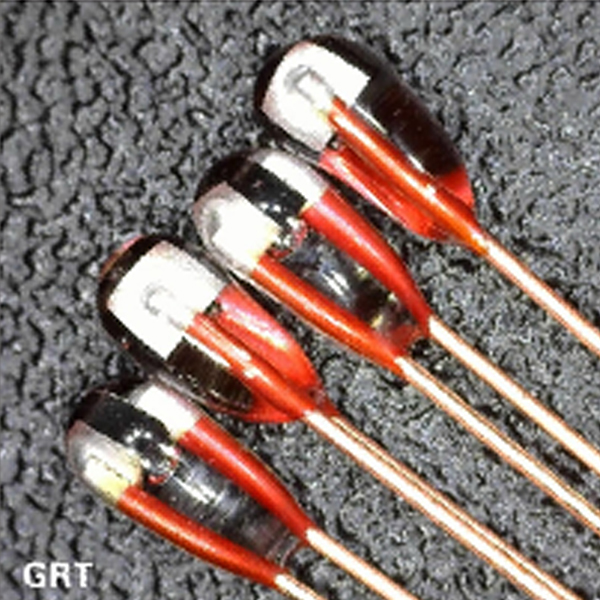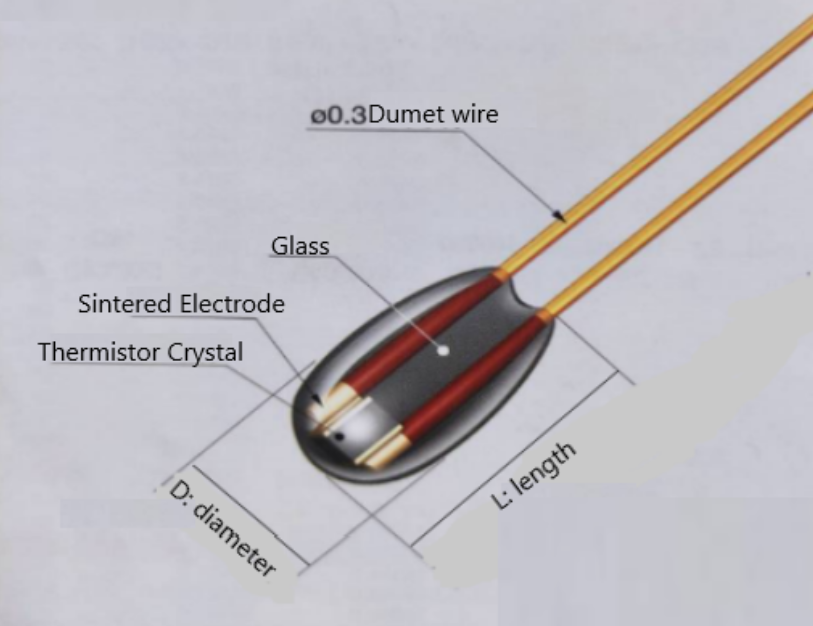Temperature-sensitive electronic components play a vital role in modern technology, ensuring precision and stability in a wide array of applications. Among these, thermistors stand out as highly responsive temperature sensors, but not all thermistors are created equal. The choice between glass-coated chip thermistors and standard thermistors is pivotal, influencing durability, accuracy, and long-term reliability. Understanding their differences is crucial for engineers and product designers aiming to optimize performance in demanding environments.
Construction and Material Composition
The structural differences between glass-coated chip thermistors and standard thermistors directly impact their functionality and resilience.
- Glass-Coated Chip Thermistors: These thermistors feature a robust glass encapsulation that shields the sensor from moisture, oxidation, and harsh chemicals. The glass coating is fused onto the chip at high temperatures, creating an impervious layer that ensures long-term stability even in extreme conditions. This construction minimizes drift in resistance over time, enhancing reliability in critical applications.
- Standard Thermistors: Typically composed of ceramic or polymer-based materials, standard thermistors may include epoxy or resin coatings for basic protection. While these coatings provide adequate shielding in controlled environments, they remain susceptible to degradation when exposed to prolonged moisture, chemicals, or mechanical stress. This makes them less suitable for high-precision or long-term applications in demanding conditions.
Performance Characteristics
Several performance factors distinguish glass-coated chip thermistors from their standard counterparts, affecting their suitability for different scenarios.
- Temperature Stability: Glass-coated thermistors exhibit superior stability, resisting resistance drift even under prolonged thermal cycling. This ensures accurate readings over extended operational lifespans. Standard thermistors, while initially precise, may experience gradual resistance shifts due to environmental exposure and material aging.
- Response Time: The encapsulation process influences how quickly a thermistor reacts to temperature changes. Standard thermistors, with their thinner coatings, often have slightly faster response times due to direct thermal contact. However, the trade-off comes in durability—glass-coated versions, while marginally slower, provide more consistent performance in harsh conditions.
- Accuracy and Precision: Glass-coated chip thermistors maintain tighter resistance tolerances across varying temperatures, making them ideal for high-precision applications. Standard thermistors, though accurate in many use cases, may experience minor fluctuations under extreme environmental stress.
Environmental Resistance and Longevity
Thermistors are frequently deployed in environments where exposure to moisture, chemicals, and physical stress is inevitable.
- Moisture and Chemical Resistance: One of the standout advantages of glass-coated chip thermistors is their imperviousness to moisture and corrosive substances. The glass encapsulation acts as an airtight barrier, preventing contaminants from infiltrating the sensor. Standard thermistors, with their resin or polymer coatings, are more vulnerable to moisture absorption, which can degrade performance over time.
- Mechanical Stress Endurance: Glass-coated thermistors also excel in mechanical resilience. The rigid protective layer resists cracking, chipping, and mechanical deformation, making them ideal for industrial and automotive applications where physical impact or vibration is common. Standard thermistors, though durable in controlled conditions, are more prone to surface wear and mechanical failure under heavy stress.
Application Suitability
The choice between glass-coated and standard thermistors largely depends on the intended application and environmental conditions.
- Medical and Industrial Applications: In fields where precision and reliability are non-negotiable, such as medical devices, aerospace, and industrial automation, glass-coated chip thermistors are the preferred choice. Their resistance to contamination and long-term stability make them invaluable in high-stakes environments.
- Consumer Electronics and General Use: Standard thermistors, while less robust, remain widely used in household electronics, HVAC systems, and general temperature-sensing applications. Their affordability and accessibility make them a practical choice for non-critical applications where minor variations in performance are acceptable.
Cost Considerations and Market Availability
Budget constraints and manufacturing complexity influence the adoption of different thermistor types.
- Manufacturing Complexity: The production process for glass-coated thermistors involves high-temperature fusing and precision encapsulation, increasing production costs. This makes them slightly more expensive than standard thermistors, which can be mass-produced with simpler coatings and less stringent material requirements.
- Long-Term Value: While glass-coated thermistors have a higher initial cost, their extended lifespan and reliability often justify the investment, especially in mission-critical applications. Standard thermistors, although cheaper upfront, may require more frequent replacements due to degradation, leading to higher maintenance costs over time.
Conclusion
Selecting the right thermistor type is essential for ensuring optimal performance and longevity in temperature-sensitive applications. Glass-coated chip thermistors offer unparalleled durability, precision, and resistance to environmental stressors, making them indispensable in high-reliability industries. Conversely, standard thermistors provide a cost-effective solution for general applications where environmental exposure is limited. By carefully evaluating factors such as stability, response time, and application requirements, engineers can make informed decisions that balance performance with cost-effectiveness.








